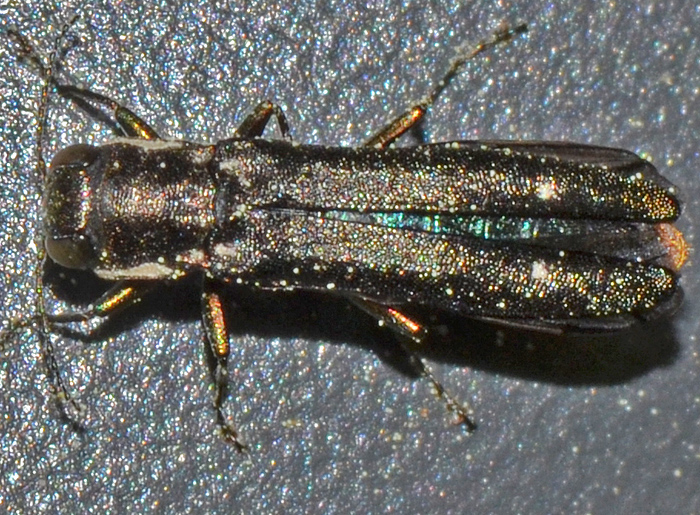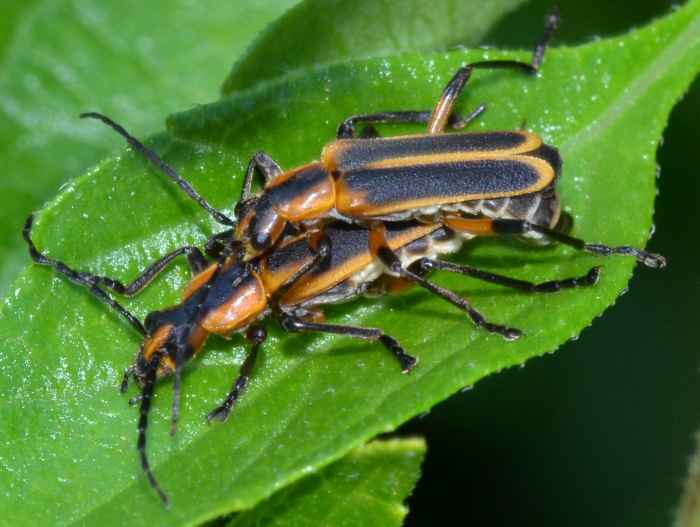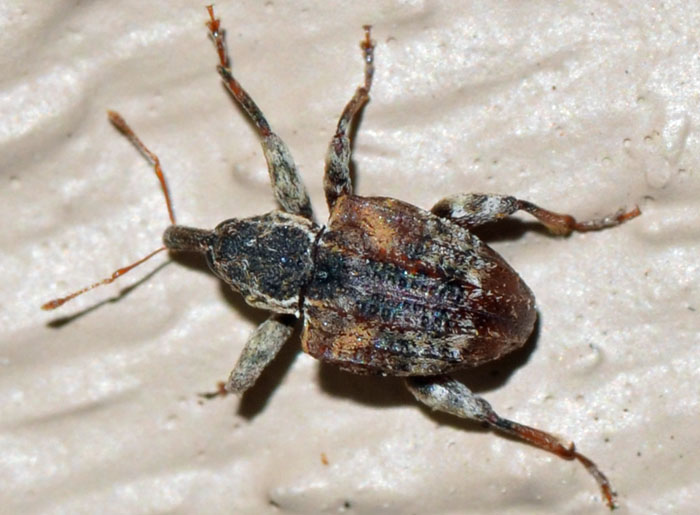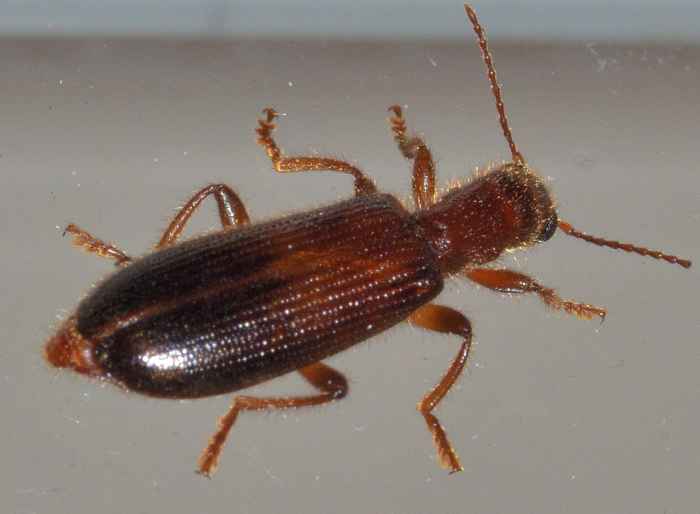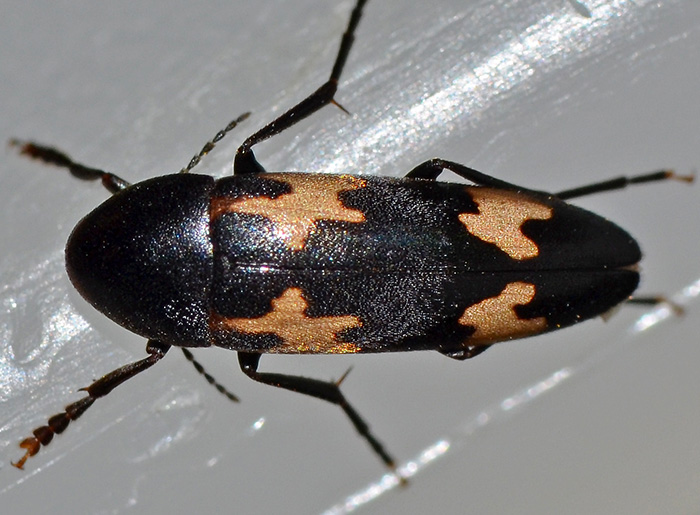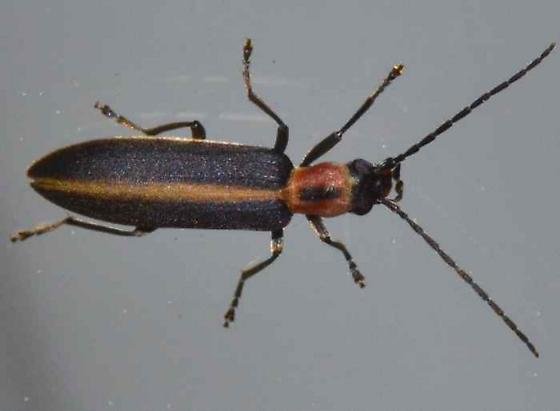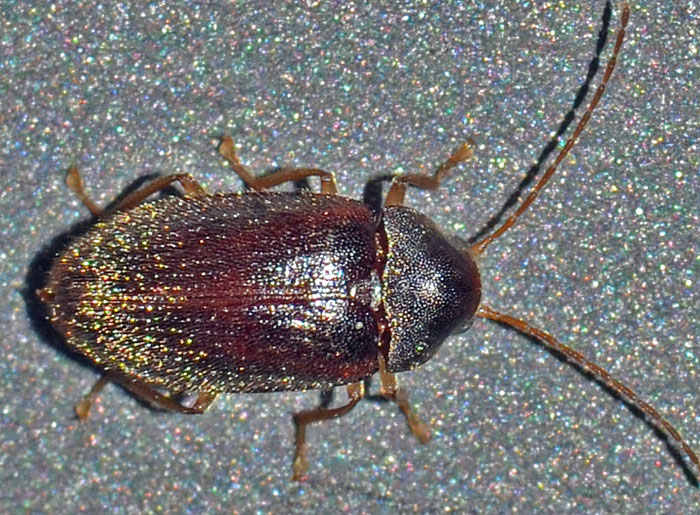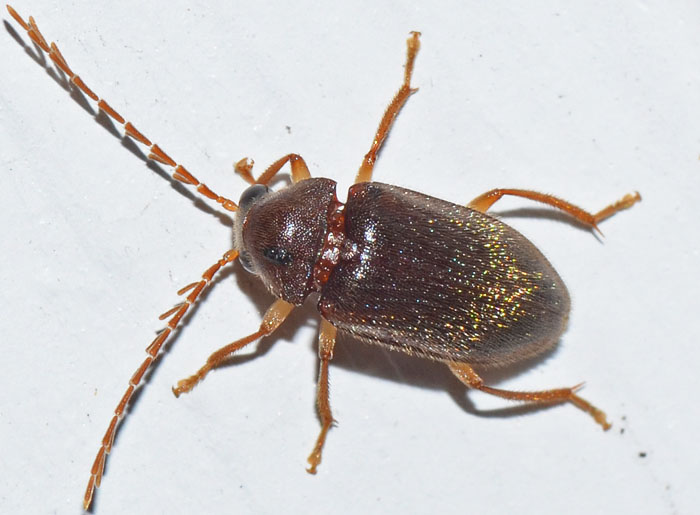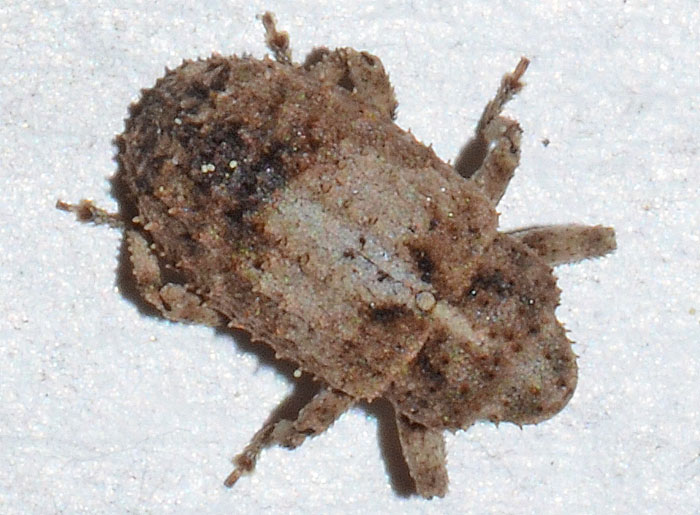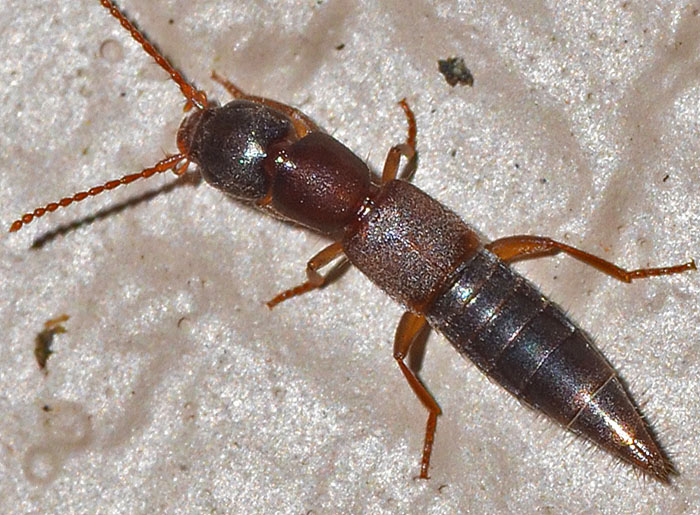 Achenomorphus corticinus. | This rove beetle is possibly Achenomorphus corticinus which represents the only species of this genus in North America. It lives in litter, compost, and occasionally mushrooms or ant nests. This specimen was attracted to our porch light. bug guide (this photo): http://bugguide.net/node/view/989117 | ||
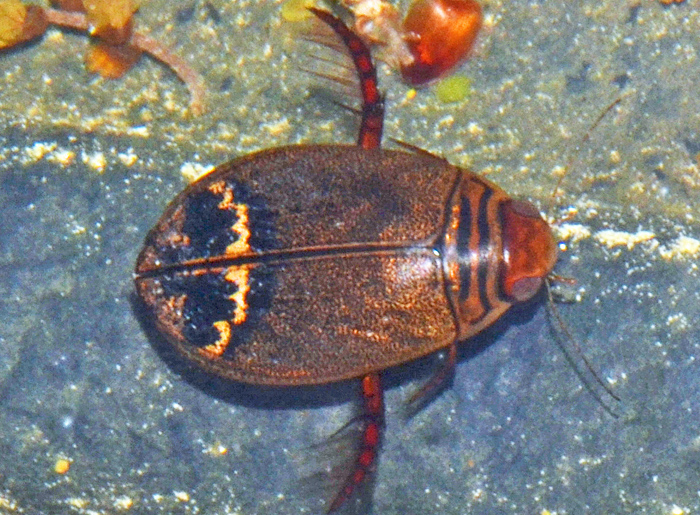 Acilius sp.. | Acilius is a Predaceous Diving Beetle that is frequently encountered in spring during mating seasons or in late fall when they disperse to overwintering sites. They are very active after heavy rains and can actually fly. I found this one in my truck bed which had turned into a little pond after heavy rain during the night. The photo shows the submerged beetle. My attempts to get it out of the water failed miserably--they are fast divers. bug guide (this photo): http://bugguide.net/node/view/1206301 | ||
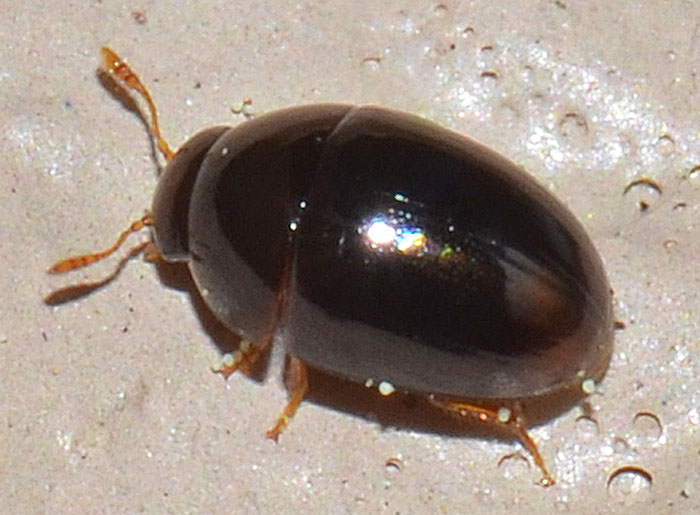 Acylomus sp.. | This Shining Flower Beetle is Acylomus sp. The genus has 20 species in North America, of which several have been collected from dead leaves and seed clusters of various trees. Larvae and adults are likely to feed on molds growing on those drying leaves. Adults are usually night active and hide during the day. bug guide (this photo): http://bugguide.net/node/view/1200876 Wheeler & Blackwell (Eds), Fungus-Insect Relationships: https://tinyurl.com/acylomus | ||
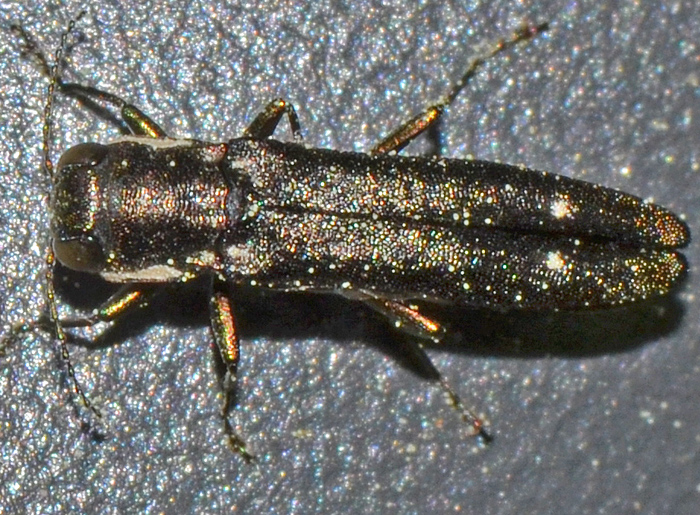 Agrilus sp.. | Most species of Agrilus are wood borers. It is one of the largest animal genera in the world, with 174 species in North America and almost 2900 species worldwide. This one has two white spots near the inside edges of its black wing cover but I highly doubt that it's the feared, invasive oak splendor beetle. I found this specimen on my black pick-up truck.
bug guide (these photos): http://bugguide.net/node/view/1208640 | ||
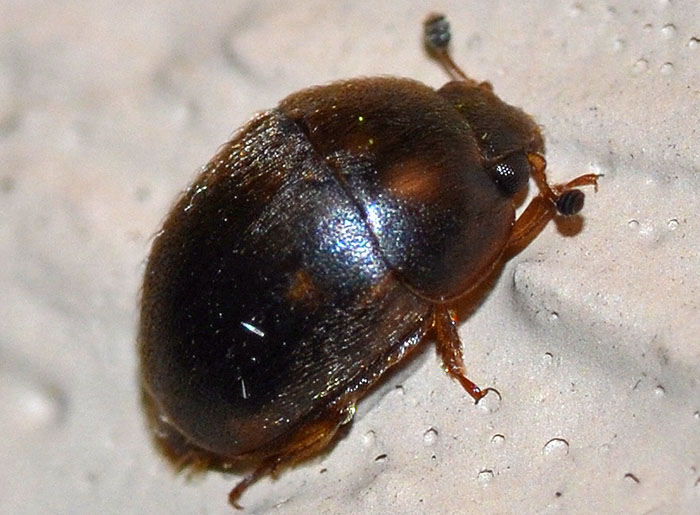 Amphicrossus ciliatus. | Amphicrossus ciliatus is a little beetle in the family Nitidulidae. It prefers sap during the spring and flowers of Eupatorium (in the aster family) and related plants in the fall. The beetle was attracted to our porch light. bug guide (this photo): https://bugguide.net/node/view/1572708 | ||
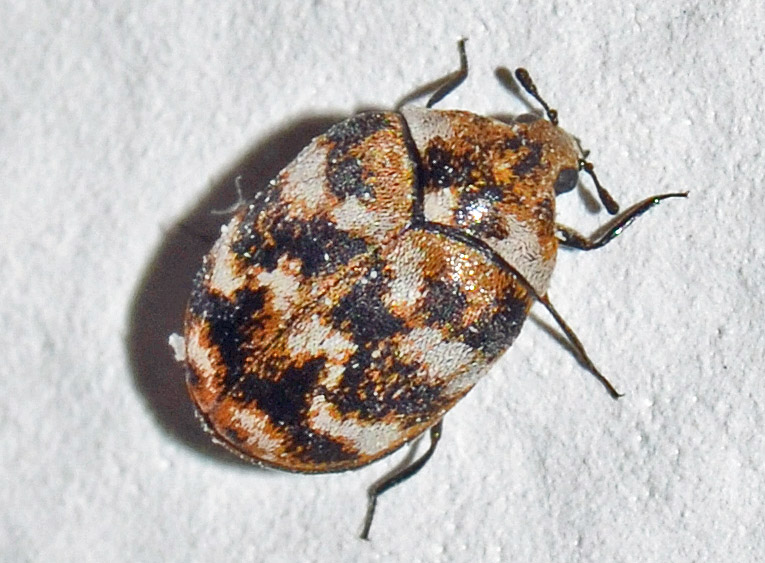 Anthrenus verbasci (Varied Carpet Beetle). | Great :( A carpet beetle. In their larval stage, they can damage natural fabrics but also feed on dust, lint, plant fibers, etc. One or two seem to be no reason to panic. I also read that they are a major threat to insect collections (don't have one) and essentially omnipresent in milk-powder factories. I found this one on our ceiling. bug guide (this photo): http://bugguide.net/node/view/1040292 UF: http://edis.ifas.ufl.edu/ig089 | ||
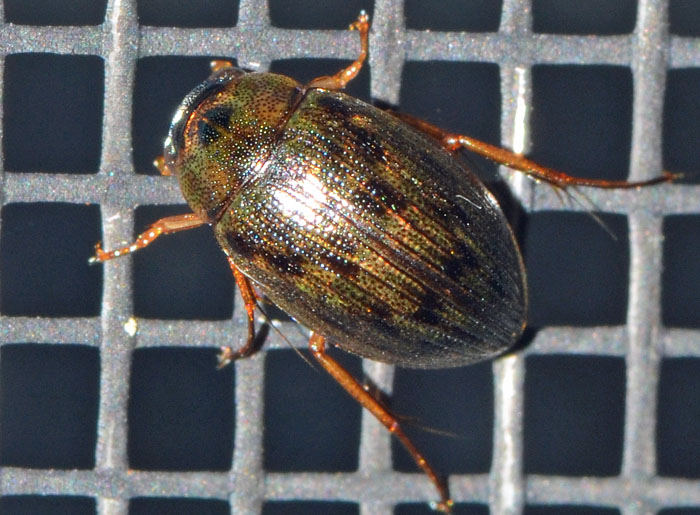 Berosus sp.. | This very interesting beetle is Berosus sp. (26 species in the US). It belongs to the family of Water Scavenger Beetles. Adults can "breath" underwater by absorbing oxygen from the water through their body surface. Notice that the second and third pair of legs have swimming hairs on the tibia. bug guide (this photo): http://bugguide.net/node/view/686482 | ||
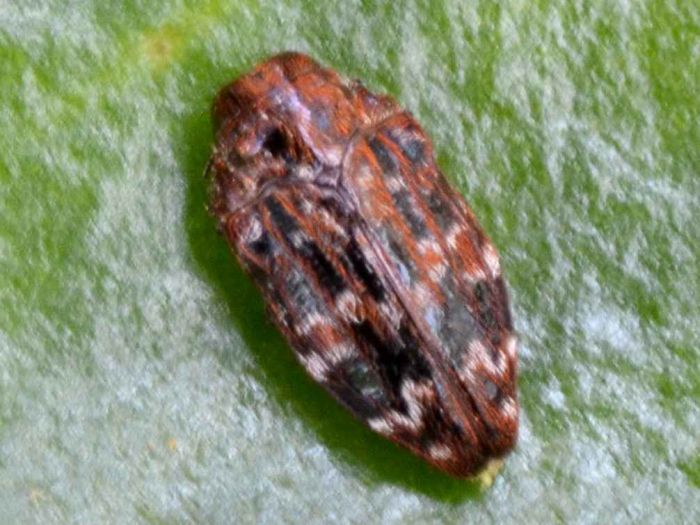 Brachys sp. (Wood-Boring Beetle). | Very strange and tiny beetle. When I took this image, I wasn't quite sure whether this is an insect at all or just dirt. Now I know that it's the metallic wood-boring beetle Brachys sp. (I guess that it's B. ovatus but the photo is unfortunately too poor). The beetles feed on the upper surface of leaves. bug guide: http://bugguide.net/node/view/12536 beetles in the bush: http://beetlesinthebush.wordpress.com/category/arthropoda/insect Weiss and Nicolay: The Canadian Entomologist, 51, 86-88 (1919): http://pubs.esc-sec.ca/doi/abs/10.4039/Ent5186-4 | ||
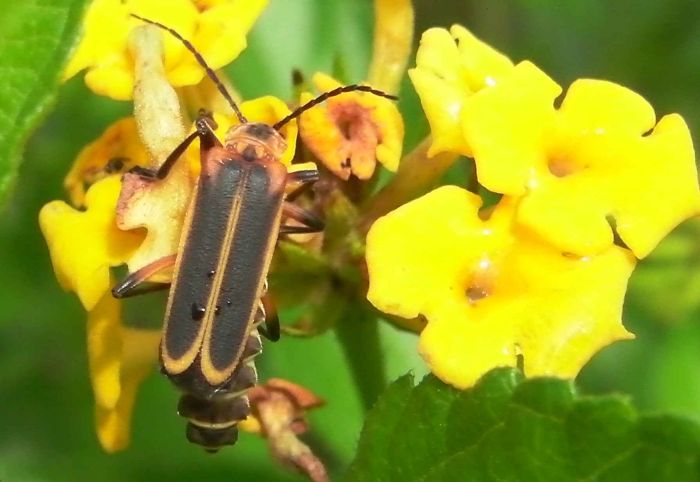 Chauliognathus marginatus | Soldier beetle (also leatherwing) Chauliognathus marginatus. The common name refers to the uniform-like appearance. The adults are important predators of aphids but also eat nectar and pollen. The small photo (08/28/11, 7 pm) shows mating soldier beetles (notice the characteristic black band on the pronotum).
bug guide (this photo): http://bugguide.net/node/view/544331 wikipedia: http://en.wikipedia.org/wiki/Soldier_beetle | ||
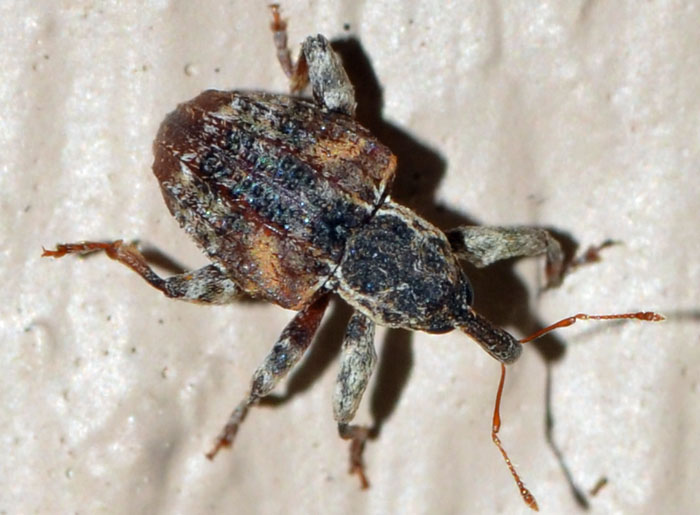 Conotrachelus anaglypticus (Cambium Curculio). | This small beetle is known to be a pest of fruits, especially peaches. The larvae also attack cotton plants. It can be found in the entire Eastern half of North America. An earlier name for this beetle was Cryptorhynchus anaglypticus. I think these odd names are great fit for this odd insect. The two photos show the same specimen that seemingly was attracted by lights.
bug guide (these photos): http://bugguide.net/node/view/974415 | ||
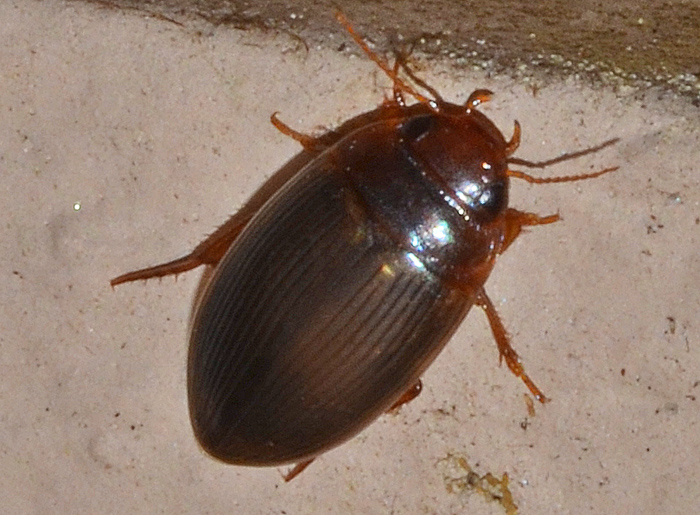 Copelatus sp.. | This small Predaceous Diving Beetle is Copelatus sp.. They are often found in temporary pools/puddles and in water bodies with accumulated organic debris (e.g. hollow trees). Florida is home to six species. Both larvae and adults feed on copepods, ostracods, springtails, and aquatic fly larvae.
bug guide (this photo): http://bugguide.net/node/view/1220504 | ||
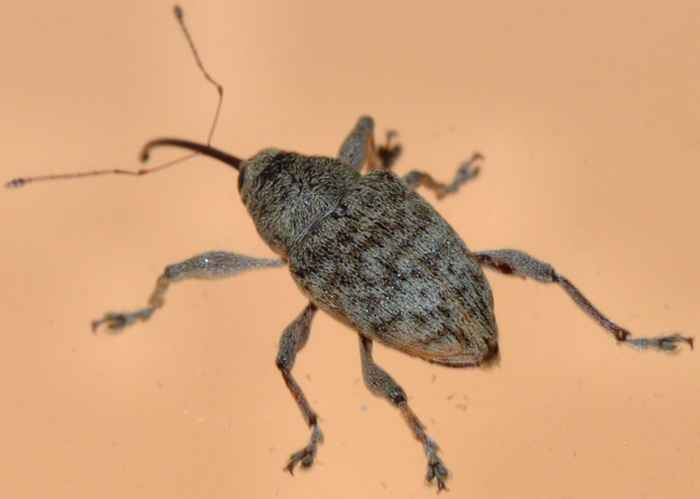 Curculio sp. (Nut and Acorn Weevils). | A member of the Snout and Bark Beetle family. This specimen is a Nut and Acorn Weevils (Curculio sp.). The genus has 27 species in North America (>350 worldwide). Female beetles bore into nuts and acorns with their long snouts to deposits eggs. bug guide (this photo): http://bugguide.net/node/view/581509 | ||
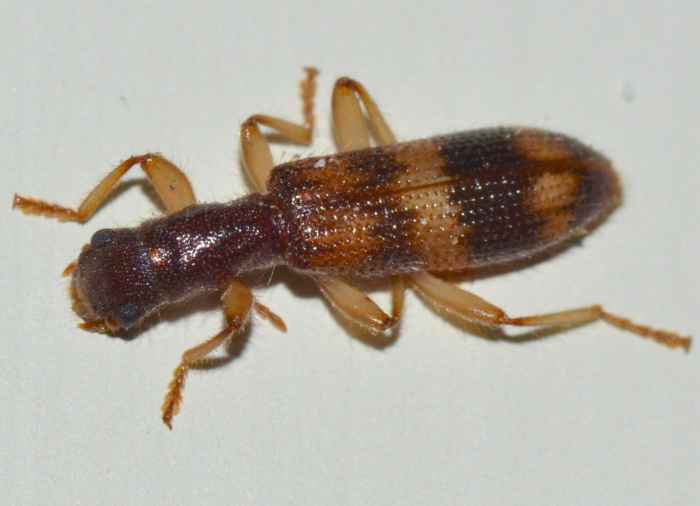 Cymatodera sp. (Checkered Beetle (nonspec.)). | I found this Checkered Beetle next to our living room window. It is probably Cymatodera wolcotti This genus is extremely difficult to identify to the species (of which there are currently over 50). Adults are predaceous and feed on a variety of insects including the larvae of gall wasps, fruit tree lepidoptera, and wood-boring beetles. The small photo was taken on 04/19/12 at 10 pm.
bug guide (large photo): http://bugguide.net/node/view/575249 bug guide (small photo): http://bugguide.net/node/view/631666 | ||
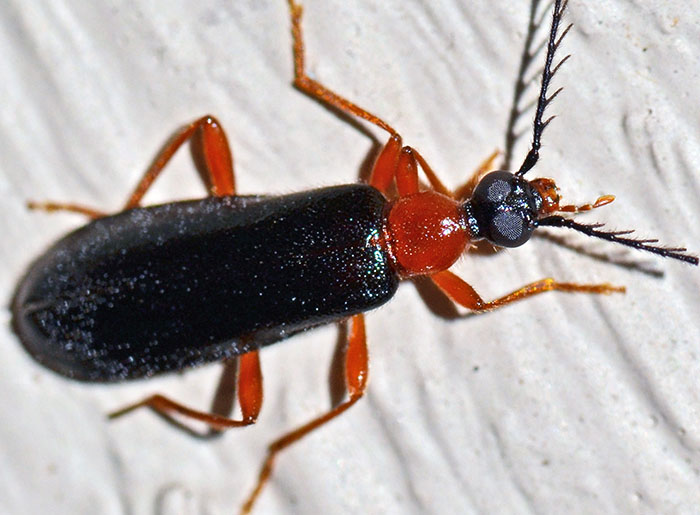 Dendroides canadensis ♂. | I really like this photo because it shows the interesting eyes of Dendroides canadensis. The length of these night-active fire-colored beetles varies from 7 to 16 mm. The genus has six different species in the US. The second link is a paper reporting that "larvae of the beetle Dendroides canadensis produce a family of 13 antifreeze proteins" that enhance one another's activities.
Click here for a higher resolution version of the photo. bug guide (this photo): https://bugguide.net/node/view/1450148 L. Wang, J. G. Duman, Biochem. 44, 10305, 2005: http://pubs.acs.org/doi/abs/10.1021/bi050728y | ||
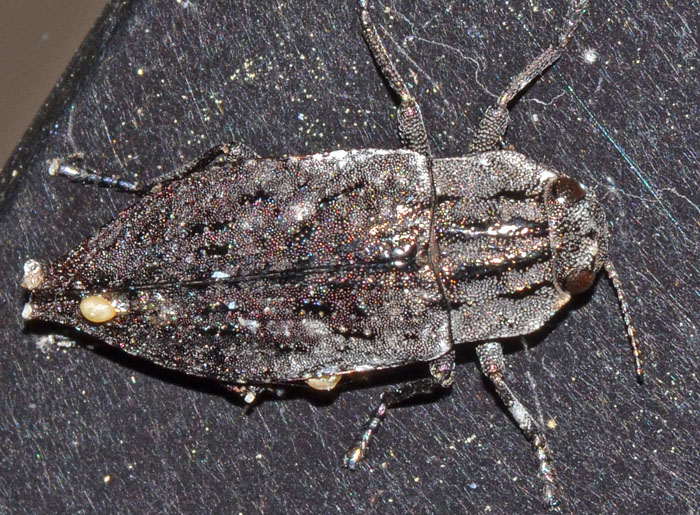 Dicerca punctulata. | This East Coast beetle is probably Dicerca punctulata. The genus has 24 species in North America. I found it on our black aluminum fence. Perhaps it took its family name, Metallic Wood-boring Beetles, too seriously? In any case, the metal fence post provide an excellent camouflage. Its larvae can be found in pines and some species are known to hibernate as adults under loose bark. bug guide (this photo): http://bugguide.net/node/view/1068131 | ||
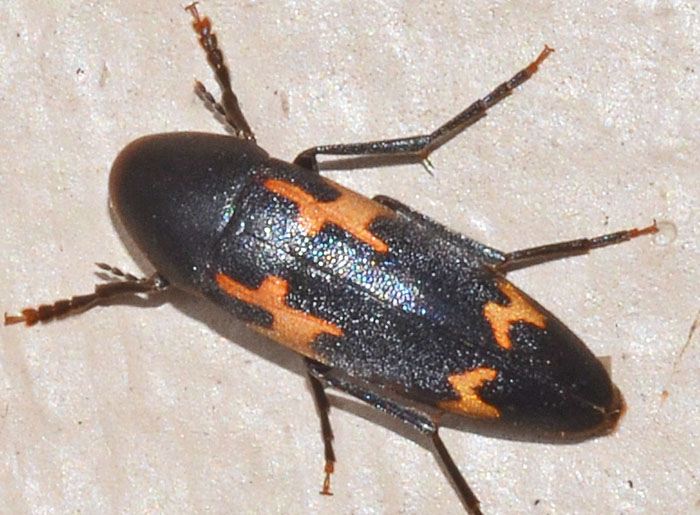 Dircaea liturata. | Dircaea liturata features a very interesting orange-colored pattern. This specimen was attracted to our porch lights. The small photo was taken on 03/23/20.
bug guide (this photo): http://bugguide.net/node/view/1123071 bug guide (small photo): https://bugguide.net/node/view/1791076 | ||
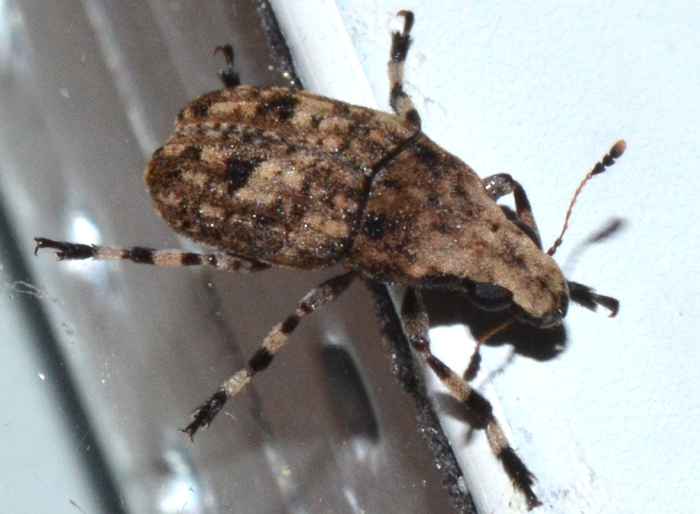 Euparius marmoreus (Fungus Weevil (unspecific)). | This fungus weevil is most likely Euparius marmoreus. The genus has five species in North America. Most fungus weevils feed on fungi or decaying plant matter, while their larvae live and feed within dead wood. bug guide (this photo): http://bugguide.net/node/view/665410 | ||
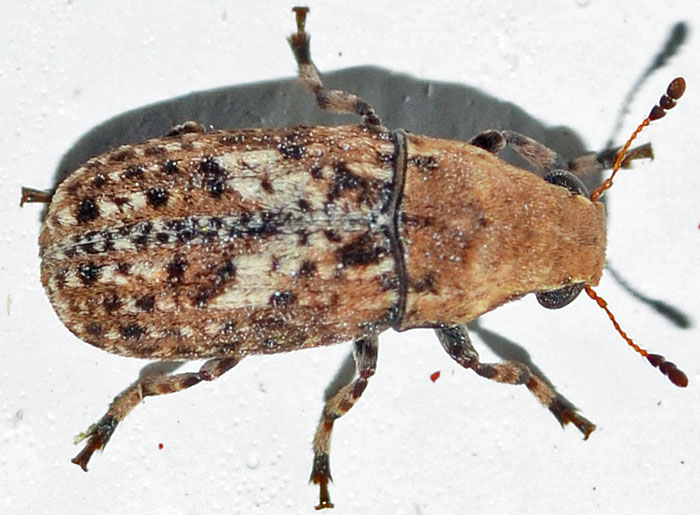 Euparius paganus. | ... and this weevil is in the sister species Euparius paganus. bug guide (this photo): https://bugguide.net/node/view/996316 | ||
 Euplatypus sp.. | A pinhole borer in the genus Euplatypus also known as ambrosia beetle. Until 1993, the genus belonged to the now broken up Platypus. Ambrosia beetles are wood-boring insects that live in symbiosis with fungi. bug guide (this photo): http://bugguide.net/node/view/1224554 | ||
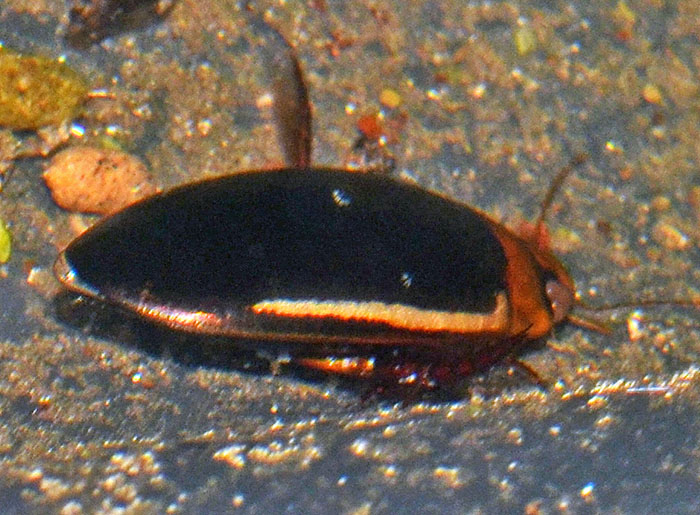 Hydaticus cinctipennis. | Hydaticus cinctipennis can be characterized by its brown coloration of the body and the presence of defined lateral yellow margins on the elytra. I found this specimen and some of its buddies in the (water-filled) bed of my truck. Unfortunately they were quite successful in hiding under plant debris, which made it even harder to take a decent photo.
bug guide (this photo): https://bugguide.net/node/view/1525838 | ||
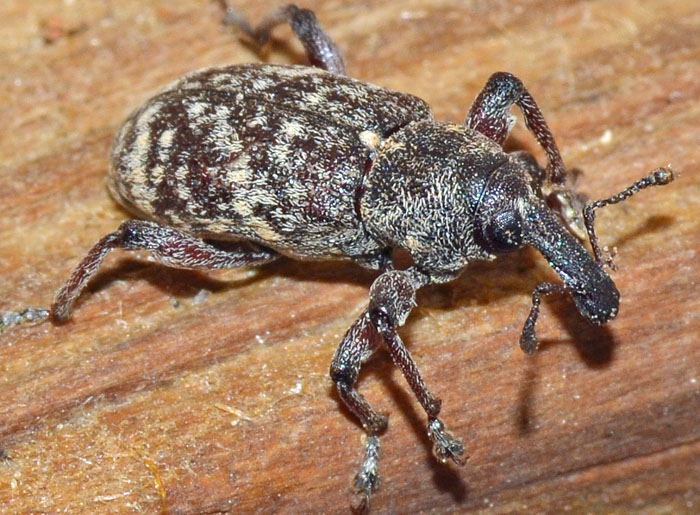 Hylobius sp.. | According to Peck and Thomas, "A Distributional Checklist of the Beetles (Coleoptera) of Florida", Florida Department of Agriculture and Consumer Services (1998), Florida is home to two Hylobius species: H. pales and H. aliridicis. All species in North America are associated with conifers. bug guide (this photo): http://bugguide.net/node/view/1066516 | ||
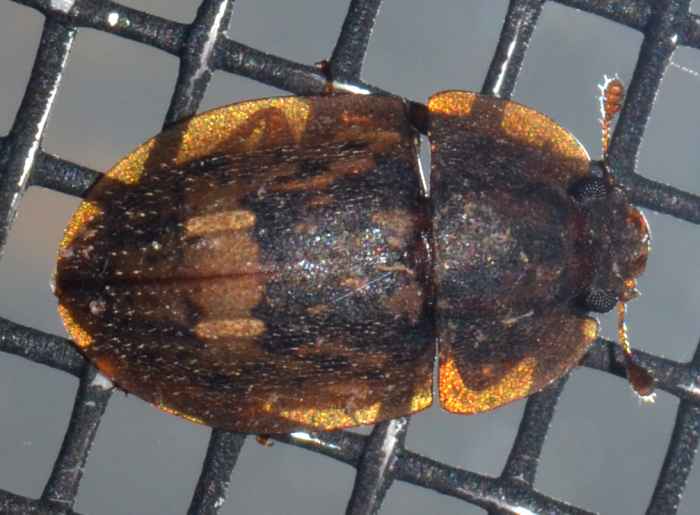 Lobiopa sp.. | The genus Lobiopa has seven species in North America and belongs to the family of sap-feeding beetles. bug guide (this photo): http://bugguide.net/node/view/684802 C. T. Parsons, Psyche 45, 156 (1938): http://www.hindawi.com/journals/psyche/1938/061652/abs/ | ||
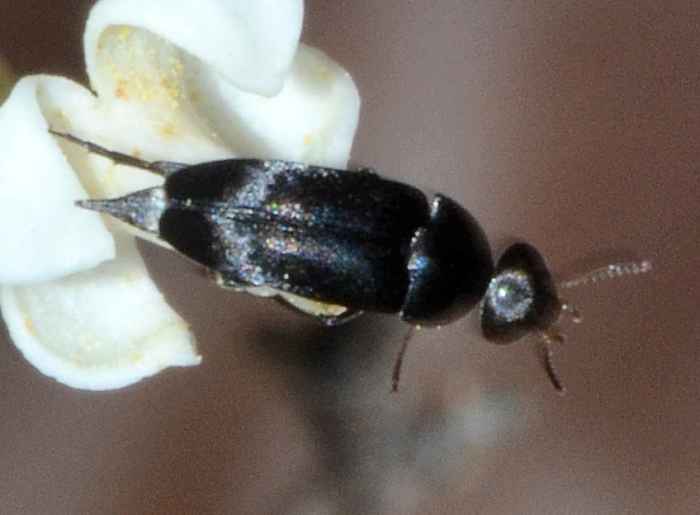 Mordella sp.. | This Tumbling Flower Beetles is Mordella sp. This spring we had many of them in our yard. They loved the our magnolia flowers but I also found them on the ligustrum trees. The genus has 24 species in North America. April seems early for them but we had a very mild winter. bugguide (this photo): http://bugguide.net/node/view/632067 | ||
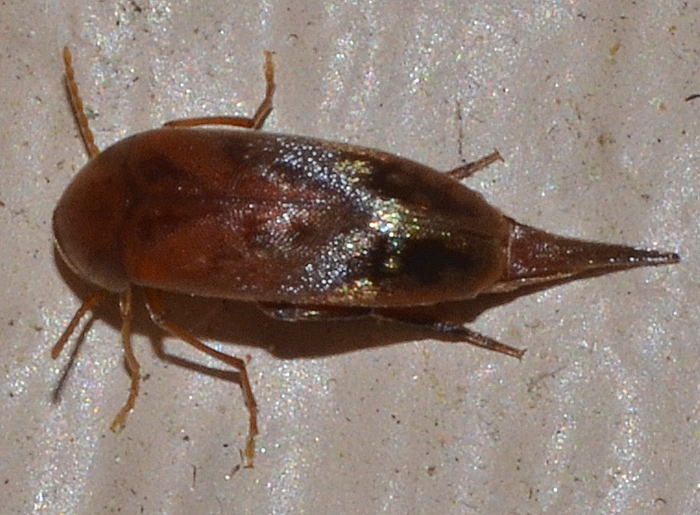 Mordellistena masoni. | Another Tumbling Flower Beetle (also known as Pintail Beetles). The bugguide states that "this species resembles M. discolor and liturata, but may readily be recognized by several small spots between the bands." The genus has over 130 species in North America. bug guide (this photo): http://bugguide.net/node/view/1217943 | ||
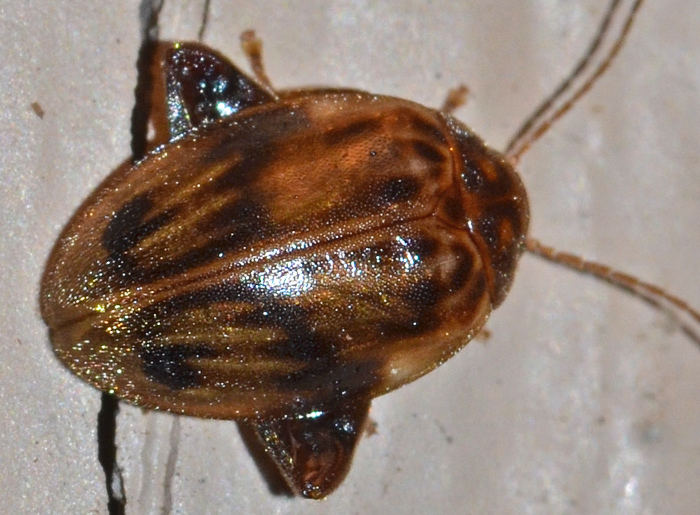 Ora texana (Texas Flea Marsh Beetle). | Ora texana is an aquatic beetle. in the family of Marsh beetles. Marsh beetles may go through as many as eleven instars and develop in stagnant and flowing water rich in decomposing plant material. bug guide (this photo): http://bugguide.net/node/view/1250254 J. H. Epler, Florida DEP: http://publicfiles.dep.state.fl.us/dear/labs/biology/biokeys/beetles10.pdf | ||
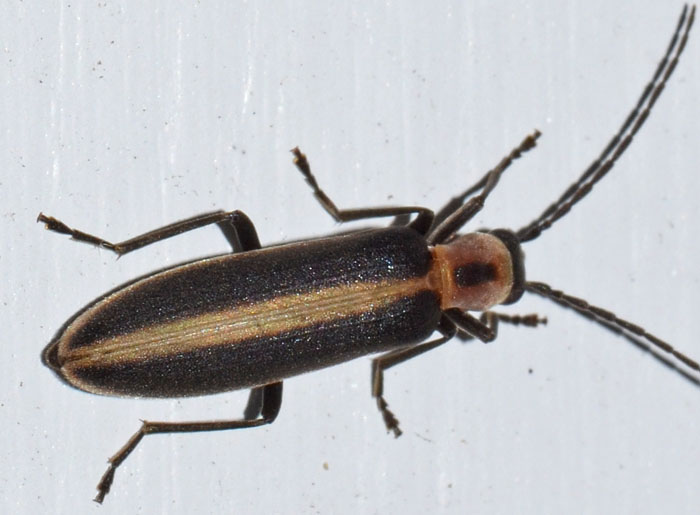 Oxycopis mimetica. | This False Blister Beetle is Oxycopis mimetica; a species that can be found in the Eastern half of the county and especially in the South East. The genus has 13 species in the US and nine in Florida. O. mimetica is slender and has a striped elytra. The small photo was taken on 04/29/12 (11 pm).
bug guide (this photo): http://bugguide.net/node/view/1066947 bug guide (small photo): http://bugguide.net/node/view/635315 | ||
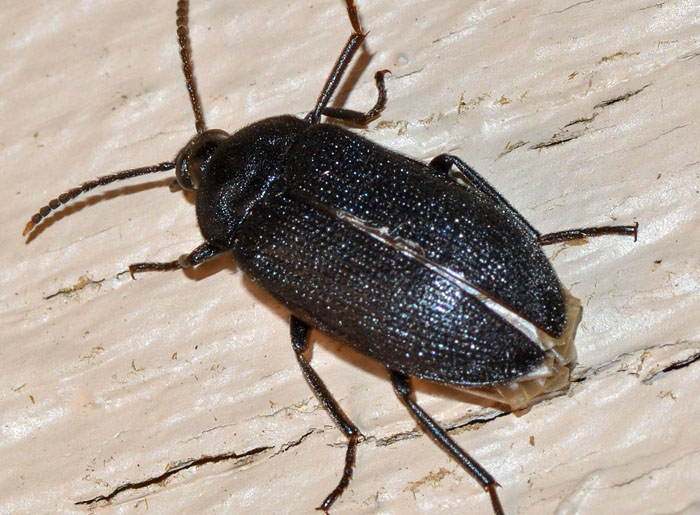 Penthe pimelia (Velvety Bark Beetle). | Penthe pimelia is also called False Darkling Beetle. It lives in forests under bark or in dried fungi and can be found in most parts of the Eastern half of North America.
bug guide (this photo): http://bugguide.net/node/view/998141 | ||
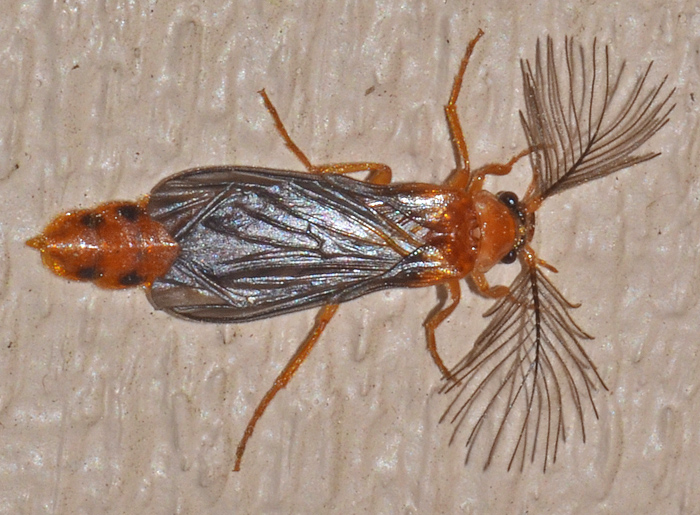 Phengodes sp. (Glowworm) ♂. | A really awesome glowworm that was attracted to our porch light. Adult females appear to be larviform (hence the name glowworm) and can emit light. Males have striking, branched antennae to detect the female pheromones; reduced elytra (forewings), and large bulging eyes. The UF link lists the following species for Florida: P. fuscipes floridensis (mainly restricted to the south-central part), P. f. intermedia, P. laticollis meridiana, P. nigromaculata, and possibly P. plumosa.
bug guide (this photo): http://bugguide.net/node/view/1204779 Mike Quinn: http://texasento.net/Phengodes.htm UF: http://entnemdept.ufl.edu/creatures/misc/beetles/glow-worms.htm | ||
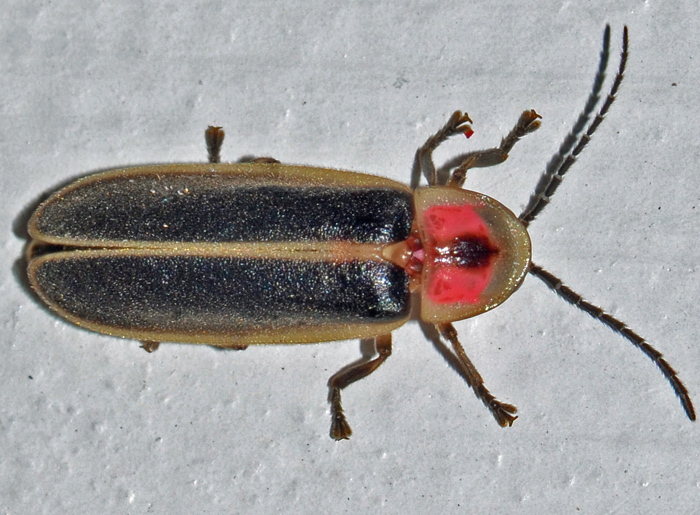 Photinus pyralis. | The signaling behavior of this species is unique. The males hover about two feet above the ground and then drop down to emit a single prolonged flash during the subsequent ascend. Flashing occurs at dusk and earlier than for related species.
As for other fireflies the light signal attracts females. From wikipedia: "Illegitimate receivers, such as female Photuris beetles, identify these signals and use them to locate the male Photinus, attract them with deceptive signals, and eat them." Adults do not feed. Females rarely fly.
bug guide (this photo): http://bugguide.net/node/view/939496 wikipedia: http://en.wikipedia.org/wiki/Photinus_(beetle) | ||
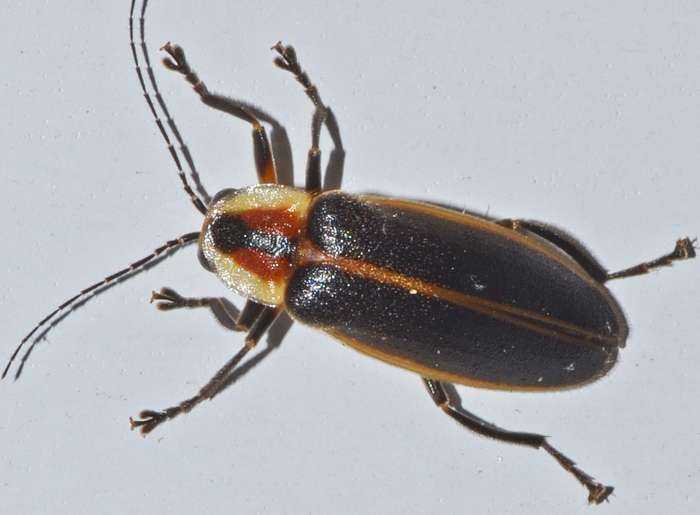 Photuris sp.. | ... and here is the offender who loves to eat males of the similar sounding genus Photinus (see above). Photuris females attract their victims by faking the flash patterns of females of the other genus. The PNAS article (second link) calls them "femmes fatales" and reports that "they also acquire defensive steroidal pyrones called lucibufagins, which are contained in Photinus but which Photuris fireflies are unable to produce on their own. Photuris females that eat Photinus males or lucibufagin are rejected by Phidippus jumping spiders. Lucibufagin itself proved to be a deterrent to such spiders." bug guide (this photo): http://bugguide.net/node/view/1219756 T. Eisner et al. Proc. Natl. Acad. Sci. USA 94, 9723, 1997: http://tinyurl.com/Photuris | ||
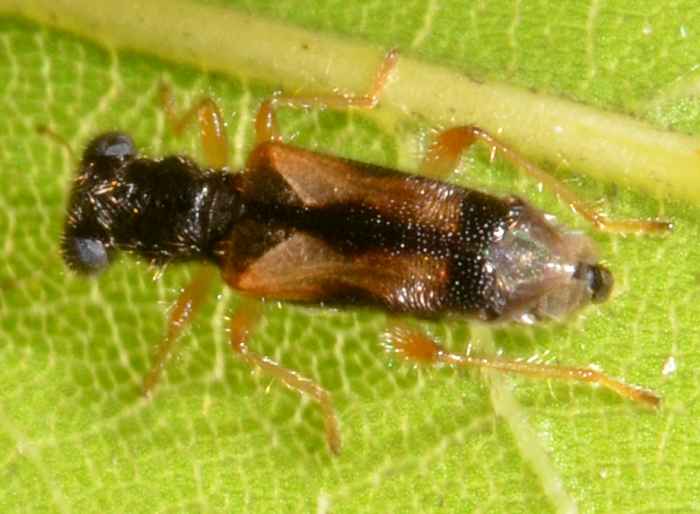 Phyllobaenus pallipennis. | Phyllobaenus pallipennis has orange to brownish antennae, mouthparts, and legs. Its body, pronotum, and head are dark colored with two yellowish markings on each elytron. The genus has 49 species in North America. bug guide (this photo): http://bugguide.net/node/view/658565 | ||
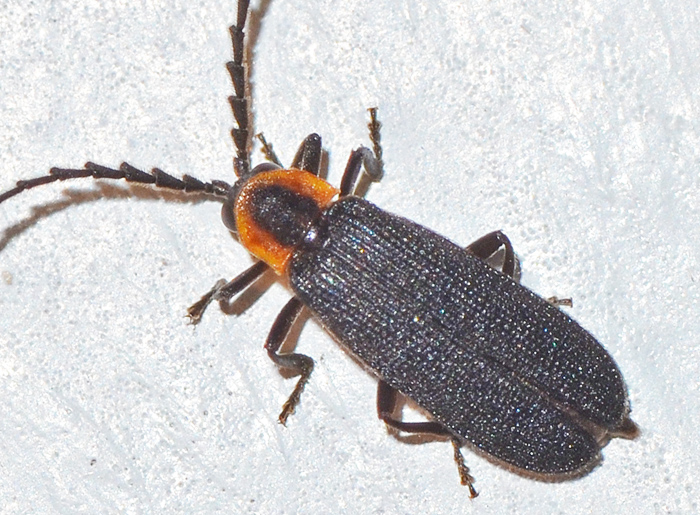 Plateros sp.. | Plateros is a genus of small to medium-sized Lycids (Net-winged Beetles), typically with dark elytra and some yellow/orange on margin of pronotum. This color pattern is shared with related genera. The species identification requires dissection. Vaguely similar looking fireflies are in the same superfamily Elateroidea.
bug guide (this photo): http://bugguide.net/node/view/1245711 | ||
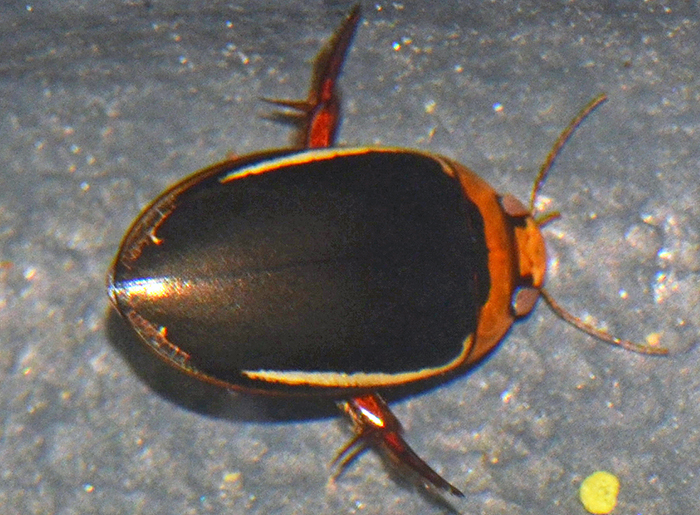 Prodaticus bimarginatus. | A couple of predaceous diving beetles discovered the rain water that had accumulated in my truck bed. Not easy to photograph since they stayed under water and had the tendency to hide under submerged leaves. This species is "lentic" meaning that they inhabit stationary, or relatively still, fresh water.
bug guide (this photo): https://bugguide.net/node/view/1561654 | ||
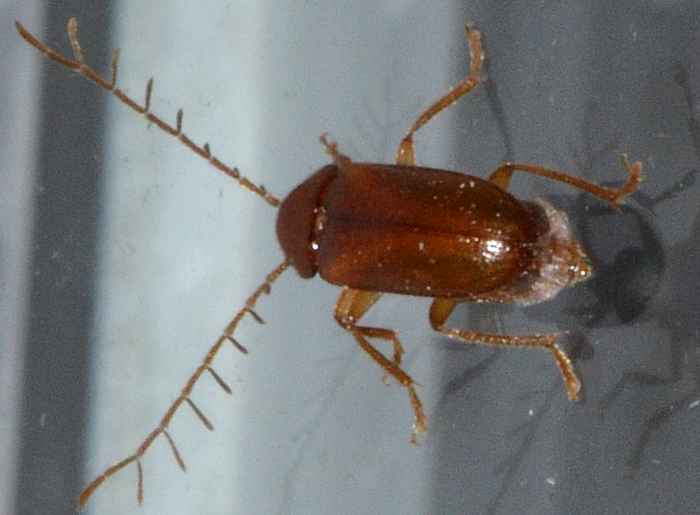 Ptilodactyla sp. ♂. | The genus Ptilodactyla has nine described species in North America. Species identification requires dissection of the male genitalia. The beetles are brown with paler appendages and are attracted by lights. The males have complex antennae as shown here while females have serrated antennae. The small photos show seemingly different species (left 8/14/14, right 6/3/14).
bug guide (large photo): http://bugguide.net/node/view/646923 bug guide (small, left photo): http://bugguide.net/node/view/977911 | ||
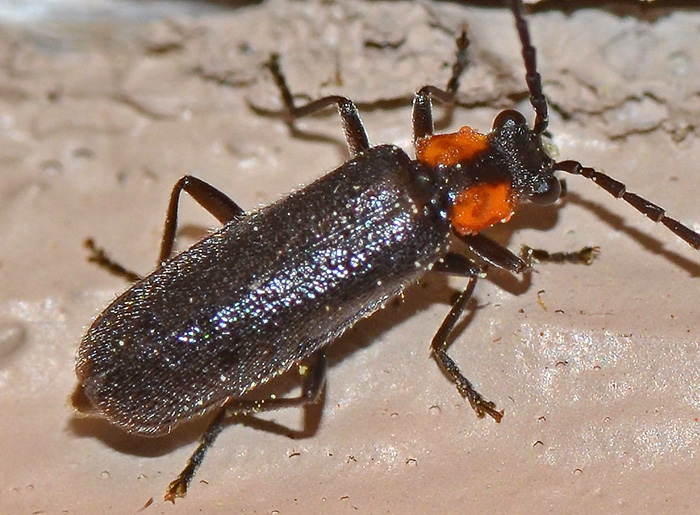 Rhagonycha sp.. | Our porch light attracted this pretty little soldier beetle. The specimen probably belongs to Rhagonycha lineola. The genus contains 46 species in North America, which in the past were cataloged under Cantharis. bug guide (this photo): https://bugguide.net/node/view/1789647 | ||
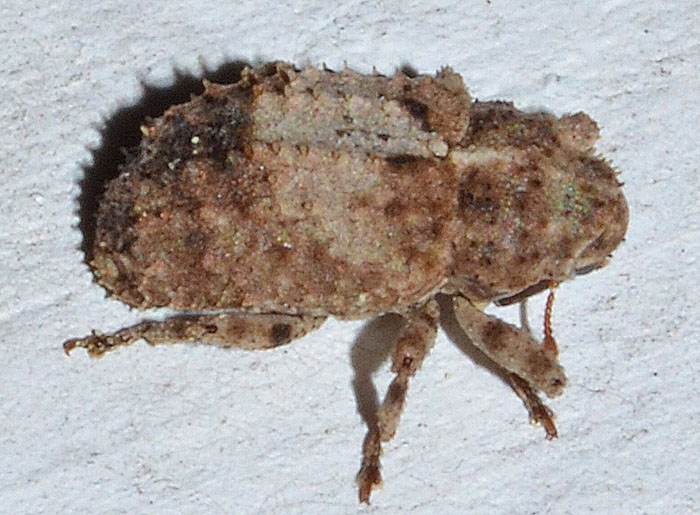 Rhynchus apiculatus. | This Hidden Snout Weevil is most likely Rhynchus apiculatus. It infests trunks and larger branches of dying wax myrtle plants.
bug guide (these photos): http://bugguide.net/node/view/1201681 E. J. Ford, Coleop. Bull. 39, 29, 1985: http://tinyurl.com/Rhynchus | ||
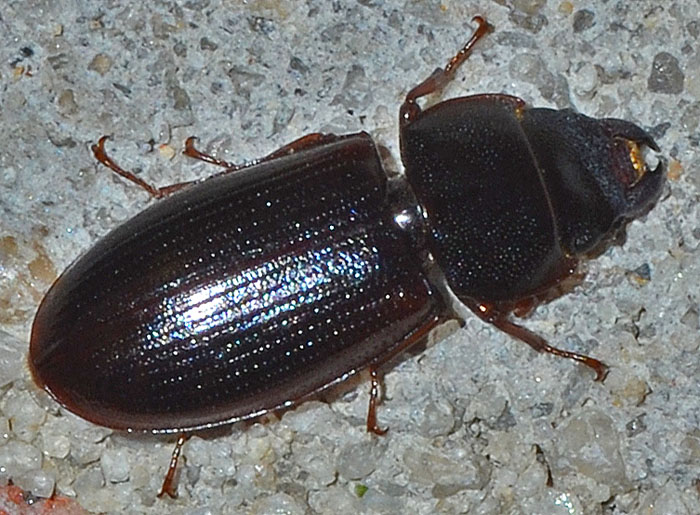 Tenebroides sp.. | There are about 20 species of Tenebroides in North America and 150 worldwide. Most of them are difficult to identify especially from photos. bug guide (this photo): http://bugguide.net/node/view/1082022 | ||
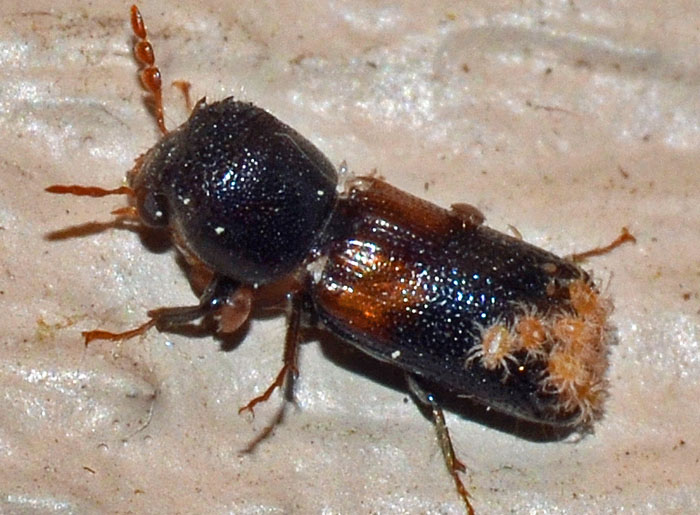 Xylobiops basilaris (Red-shouldered Bostrichid). | A horned powder-post beetle with the impressive name Xylobiops basilaris. Its larvae feed in sapwood (the living, outermost portion of a woody stem or branch), whereas the adults often bore into healthy twigs for food and shelter. This specimen obviously has a bit of a parasite problem. bug guide (this photo): http://bugguide.net/node/view/1101391 | ||
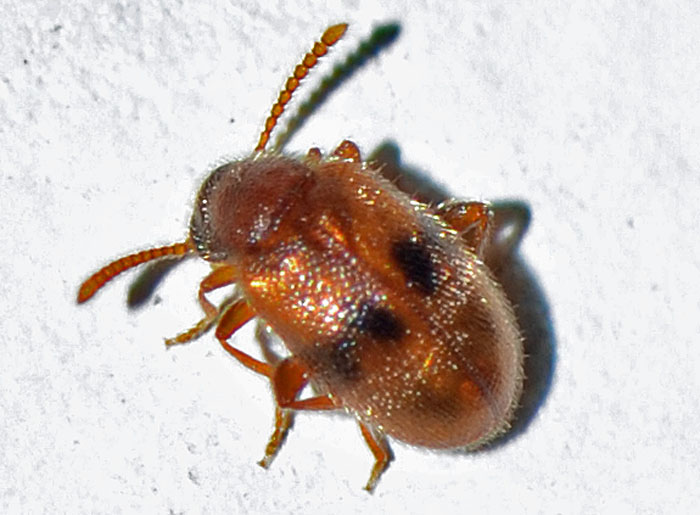 Zonantes subfasciatus. | This little guy has been tentatively identified as Zonantes subfasciatus which belongs to the family of the Ant-like Leaf Beetles. When I took the picture, all I saw was a tiny small speck. I believe the beetle was attracted to our porch light. bug guide (this photo): http://bugguide.net/node/view/994810 |

